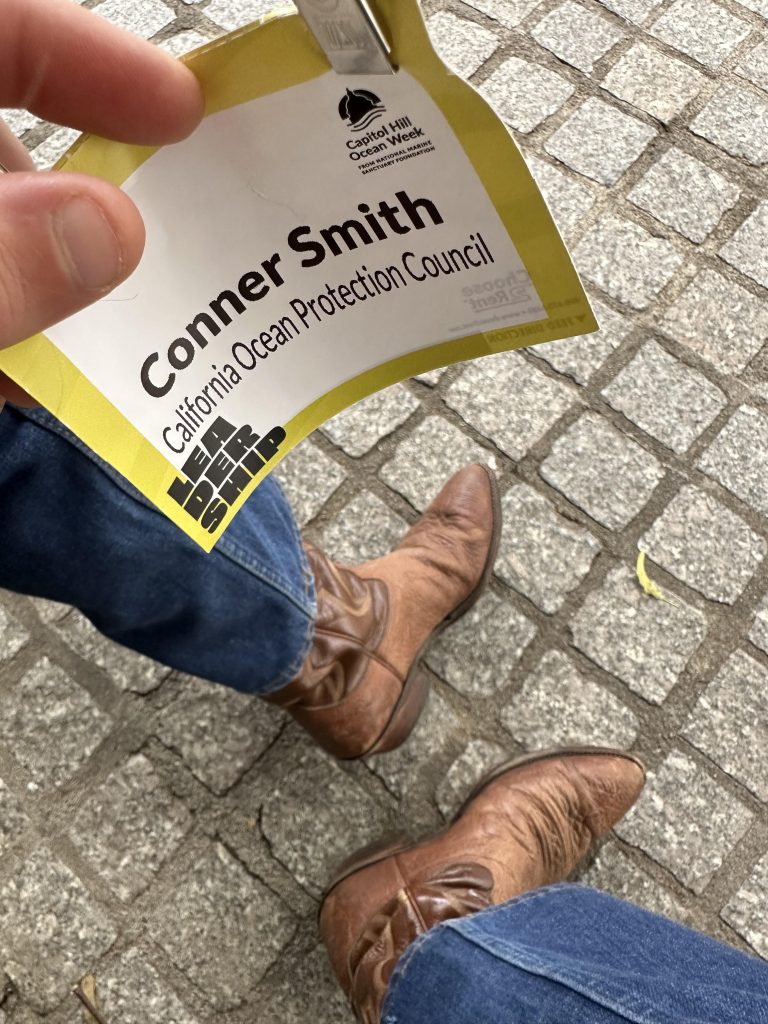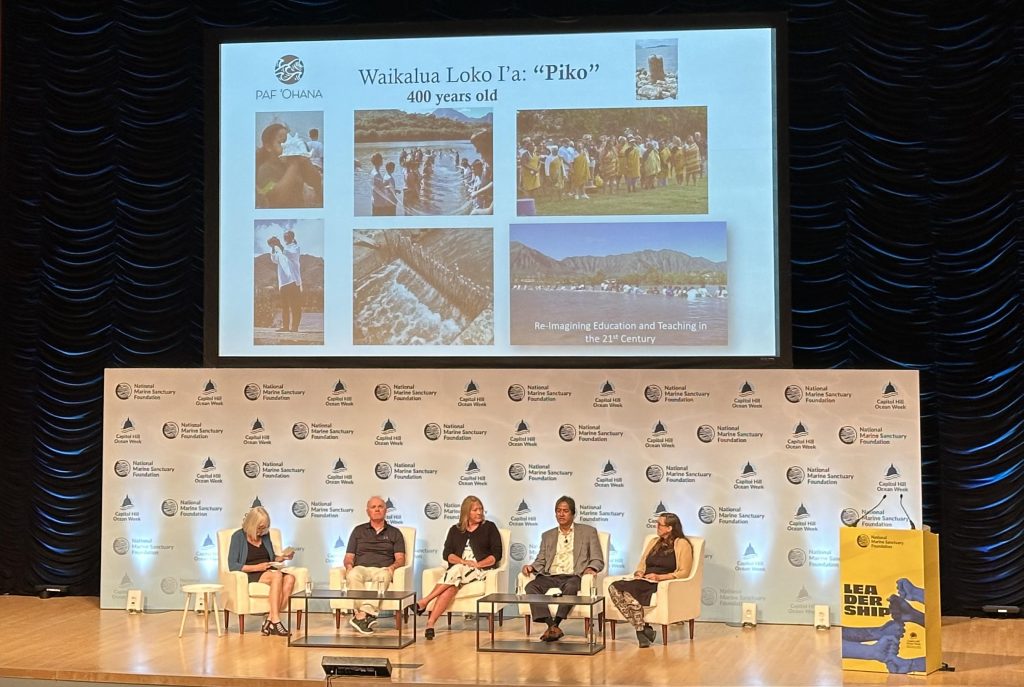From Fishponds to Floating Turbines – Ocean Solutions on Display at Capitol Hill Ocean Week
By Conner Smith, California Sea Grant State Fellow
The lead up to World Oceans Day on June 8, 2024 is often a time for big announcements in ocean stewardship. This year was no different. The Biden administration kicked off Oceans Week, announcing new national strategies focused around three core goals: advance a sustainable blue economy, strengthen biodiversity, and invest in environmental DNA (eDNA) technology. The nation’s 16th National Marine Sanctuary, Lake Ontario, was officially designated on June 3. This delivered a high note to the launch of this year’s Capitol Hill Ocean Week (CHOW) led by the National Marine Sanctuary Foundation.
The annual public convening kicked off the day following OPC’s latest Council Meeting, where progress on sea level rise adaptation, offshore wind impact assessment, critical habitat monitoring, and tribal nature-based solutions was featured. These strategic priorities resonate with several recurring storylines across the two days of CHOW:
The Path to 30X30
National progress toward protecting 30% of our coastal waters was referenced in almost every session at CHOW. Many panelists and attendees raised important questions around how durable protection is being defined and which areas will ultimately qualify. OPC has provided a clear pathway to addressing these questions with the reveal of the draft 30X30 Decision-Making Framework for Coastal Waters. Drawing on science-based international guidance, the framework is up for 120 days of public comment and tribal consultation. The outcome of this process will give clear guidance on opportunities to strengthen biodiversity, access, and climate resilience throughout the state.
Support for Indigenous Knowledge
Indigenous perspectives were evident across CHOW. Panel discussions (see photo below) ranged from issues of food sovereignty to the need to redefine conservation approaches to uplift Indigenous ways of knowing. Hawaiian leaders celebrated progress restoring Loko i’a, fishponds used for traditional aquaculture. In Washington, Makah representatives spoke to dissonance between conservation narratives and their ancestral whaling practices. Across all discussions, co-management of shared oceans was a common theme. The two tribal projects funded by OPC work towards meaningful co-management in California, supporting tribally-led land-based aquaculture, ecosystem restoration, and stewardship in the Central and North Coast.
Collaboration on Climate
Climate change was widely referenced as the core threat to biodiversity and a thriving blue economy. There were several powerful calls for the need for groups with a lot on the line (fishers, Indigenous communities, youth) to play a leading role in the effort to address this threat. Changes in ocean use positioned to mitigate or increase resilience to climate change, notably offshore wind development, need to be approached in partnership. Collaboration between tribal leaders, wind developers, fishing fleets, and others around the proposed Chumash Heritage National Marine Sanctuary was elevated as an example of how this can be achieved. OPC continues to support this type of collaboration with new funding for the California Fishermen’s Resiliency Association. Offshore wind is compatible with biodiversity and the blue economy in California when decision-making power and the benefits of this development flow to the coastal communities where turbines will be located.

The theme of this year’s CHOW was leadership, a mandate OPC is delivering on in California. State priorities continue to influence conversations around ocean stewardship at the national level. As one panelist stated colorfully, there needs to be more opportunities for “boots, not suits” to set the tone for management. OPC continues to invest in the bottom-up, collaborative processes stressed repeatedly at CHOW, working towards a future where every type of ocean user has a say in how we defend our shared seas in the face of daunting but manageable change.


